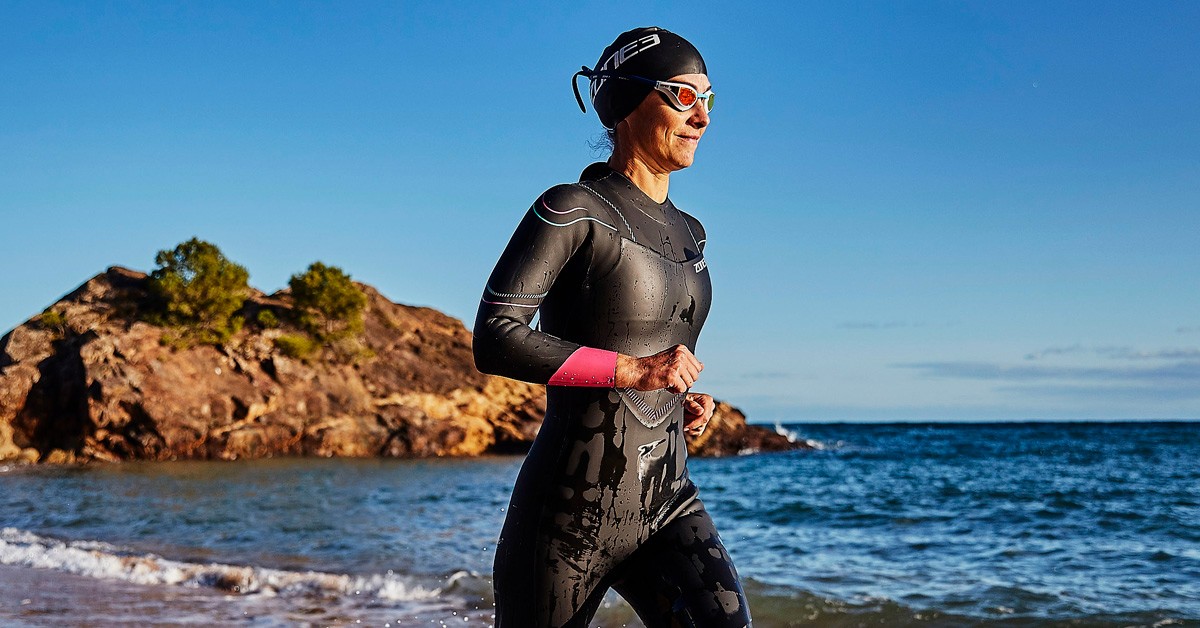Only those who are intending on participating in open-water or triathlon events should invest in an open-water or triathlon wetsuit unless they are willing to give up some protection for more mobility. You may just buy a wetsuit designed for surfing or normal swimming, which is a little thicker and provides greater warmth and protection for regular swimming. Wetsuits come in three different cuts, and which one you choose with depends on your personal choice as well as how cold the water is where you’ll be swimming.
The openwater wetsuit include full-length arms and legs and provide the best protection from the chilly water while swimming. This wetsuit features no sleeves and full-length legs, so your shoulders have a lot of freedom of movement. With no sleeves and knee-length legs, they should only be worn in warmer water.
For Swimming, How Thick Of A Wetsuit Is Recommended?
The thickness of your wetsuit is the next consideration. Wetsuits typically fall anywhere between 2mm and 7mm thick, however this may vary greatly depending on the area of the suit you’re wearing. Having a thicker wetsuit keeps you warmer. A wetsuit is unnecessary if you still have chattering teeth, but if you go too thick, you’ll sweat and be uncomfortable.
Because of this, you’ll need to know the typical temperature of the water in the area where you’ll be swimming during the time you’ll be swimming. As you might imagine, this varies from place to place, and you may be intending to swim year-round and in a variety of locales. Most people feel that a wetsuit between 3mm and 5mm thick is ideal for wild swimming. A 2mm wetsuit is ideal for the hottest months of the year, while a 7mm suit is best suited for colder seas.
Another reason to consider thickness is how it affects your drawing skill. A thicker suit may be more comfortable for someone with a lot of strength in the water, while a thinner suit may be better for someone who needs more flexibility in the water to complete their strokes. Choosing the World travel blog for all the information is important.
What Should I Check For While Purchasing A Wetsuit?
If you’re looking for a wetsuit for open water swimming, you’ll want to make sure it fits well, isn’t too heavy, and enables you to move freely.
Material
Seek for a wetsuit with as much rubber (rather than neoprene fabric) as feasible in terms of material. You’ll be slowed down by the weight of neoprene fabric while you’re swimming since it soaks up water.
Seams are taped together.
Consider purchasing a wetsuit that has taped seams on the wrists and ankles so that it is easy to put on and remove.
Zip backwards
A reverse zipper wetsuit, which zips from the top to the bottom, is another option to explore. It’s not a must, but it may assist keep the zipper from dangling while you’re in the water.
Fit
To be effective, your wetsuit must first and foremost be appropriately fitted to your body. You’ll have to try it on and get into a well-fitting wetsuit, but once you do, you should be able to swim with your arm strokes. Wrist, neck and ankle should all be as close to your body without causing discomfort or restricting circulation.






